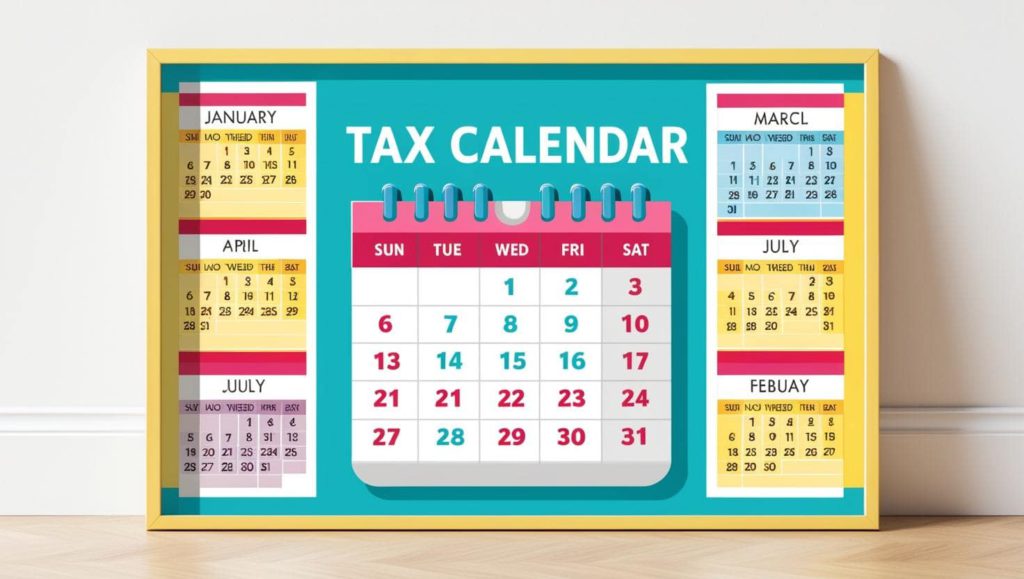There are two types of ways people follow a tax year. Either by the standard worldwide calendar. Or, via the fiscal calendar, which was the original tax year.

The tax year, which is the period used for calculating annual income and determining tax obligations, can seem like a complicated concept at first. Most people are familiar with the idea that businesses and individuals must file their taxes. This is based on income earned over a 12-month period. A full year of their earnings tied together.
However, the way the tax year is structured and why it begins and ends when it does have historical roots that date back centuries. In this article, we’ll explore why the tax year is the way it is, and how its structure has evolved over time. Why do some countries go by different start and end months, and where did it come from?
What is a tax year?
The tax year refers to the 12-month period that a taxpayer uses for reporting income and expenses to the government. It is the time frame for which taxes are calculated. In many countries, like the United States, the tax year for individuals typically follows the calendar year (January 1 to December 31).
However, businesses may choose to follow a different tax year, known as a fiscal year, which may begin and end on dates other than January 1 and December 31. There are still many countries who follow this too. So, all businesses within that country, as well as self-employed individuals will need to work with the fiscal year.
The origins of the tax year
The concept of a tax year has deep historical origins. Understanding its structure requires looking back at how taxation has evolved over time. Historically, taxes were closely tied to agricultural cycles and religious or seasonal calendars.
Agricultural roots
In ancient societies, including those in Egypt, Rome, and medieval Europe, taxes were often collected after harvests. This is when people had income from crops and livestock to pay. The timing of this collection aligned with the agricultural cycle, and the end of the harvest season was an ideal time to assess income for the purpose of tax collection.
In agrarian economies, income varied seasonally, so taxes were often tied to the productivity of the land. Governments needed a fixed period to measure that productivity, and this is where the concept of a “year” began. Over time, this evolved into a standardised 12-month period, usually starting after the harvest season.
Religious and calendar influences
Many early tax systems also aligned with religious calendars. Particularly those used in Christian and Islamic traditions. For example, in medieval Europe, the year began in the spring, which was closely linked to religious observances. The renewal of life after winter. This religious influence played a role in structuring the tax year.
However, it was the adoption of the Gregorian calendar in 1582 (which replaced the Julian calendar) that solidified the concept of the calendar year as we know it today. This transition eventually led to the modern idea of using a calendar year for tax purposes in many countries. This idea would make sense as it’s the calendar everyone follows, not just businesses.
Why the calendar year is the default
In many countries, the calendar year (January 1 to December 31) became the default tax year for individuals. Largely due to practicality and simplicity. A fixed starting point makes it easier for individuals and governments alike to track income and expenses over a consistent, globally recognised period.
Several factors contribute to the adoption of the calendar year as the standard tax year:
Simplicity and consistency
Aligning the tax year with the calendar year makes tax filing easier for individuals and businesses. Since most people are already familiar with the calendar year, it provides a consistent and easily understood framework for tax reporting. Having a fixed start and end date avoids confusion and allows for straightforward comparison across different taxpayers.
Standardisation
A calendar year tax system is simpler to administer on a national level, as it standardises the tax filing and collection process. It allows for uniform tax deadlines and reporting. Streamlining the work of government agencies responsible for collecting taxes.
Global alignment
Many countries use the calendar year as the tax year, making it easier for businesses and individuals engaged in international trade or working across borders. A shared tax period across countries helps with consistency in international tax agreements and business operations.
Why some businesses choose a fiscal year
While the calendar year is common, businesses, especially large corporations, may opt for a fiscal year, which does not follow the January-December calendar. A fiscal year is a 12-month period that ends on any month other than December. For example, a company might choose a fiscal year that runs from April 1 to March 31 or from July 1 to June 30.
There are several reasons businesses choose a fiscal year instead of the calendar year:
Matching business cycles
A fiscal year allows businesses to align their tax reporting with their operational cycle. For example, a retailer whose sales peak during the holiday season may prefer to end their fiscal year after the busy period, giving them more time to assess performance before filing taxes. This allows businesses to better match their financial reporting with their actual income and expenses.
Minimising seasonal disruptions:
Some industries experience significant seasonal fluctuations. For example, agriculture or tourism-related businesses might find that a fiscal year that ends during the off-season provides a clearer picture of their annual performance.
Historical legacy
Many businesses, especially larger ones, adopted fiscal years long before standardised tax laws were put in place. In many cases, this historical decision continues to influence their tax year selection.
Tax year changes and the impact on individuals
While most individuals follow the calendar year for tax purposes, there are situations where the tax year might differ. For example, if someone starts a business or changes their financial situation mid-year, they may need to adjust their tax filings accordingly.
In some cases, governments allow taxpayers to choose a different tax year for specific reasons, such as when a business is being set up or when individuals are involved in special tax arrangements like partnerships. These variations can require more paperwork and administrative effort. But, they help to accommodate various personal and business needs.
The role of the tax year in tax planning
Understanding the tax year is essential for effective tax planning. Knowing when your income will be assessed helps you strategise deductions, credits, and other financial moves that can lower your tax liability. For example, if you know your tax year will end in December, you might accelerate expenses or delay income in order to reduce your taxable income.
The tax year also plays a role in the filing deadline for tax returns. In the United States, for example, individuals must file taxes by April 15 of the following year if they are following the calendar year tax system. Businesses that use a fiscal year will have different deadlines based on their year-end.
The tax year is a crucial concept in personal and business finance. Understanding its history and structure can help you navigate the complexities of tax filing and planning. Whether you follow the calendar year or choose a fiscal year, the key takeaway is that the tax year exists to provide a standardised and practical way for individuals and businesses to report their income.
The calendar year became the default for individuals due to its simplicity and global recognition. While businesses may choose a fiscal year to better align with their operational cycles. Ultimately, the tax year system helps streamline tax administration and ensures fairness in assessing income and determining tax obligations.



